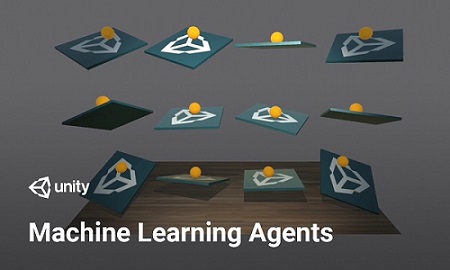Handmade RL -1
2018-05-26
Unity로 Machine learning Agent 만들기 : First story : 기본구성 설명
wonseok Jung
Getting Started with the 3D Balance Ball Environment
Understanding a Unity Environment (3D Balance Ball)
-
An agent observes and interatcs with an environment
-
In Unity, an environment contains :
- Academy
- One or more Brain
- Agent objects

1. Academy
- The Academy object for the scene is placed on the Ball3DAcademy Gameobject
- Several properties that control how the environment works
- Training and Inference Configuration : set the graphcs and timescale
- Training Configuration : academy uses it during training
- Inference Configuration : when not training
1.1 Setting graphics and time
- Training configuration : low graphics quality, high time scale
- Inference Configuration : High graphics quality, time scale 1.0
- Observing the environment during traing
- Adjeust the Inference Configuration : use larger window, timecale closer to 1:1
1.2 Three functions
- There are three functions you can implement
- Acdemy.InitializeAcademy() : Called once when the envrionment is launched
- Academy.AcademyStep() : Called at every simulation step before Agent.AgentAction() and after the agents collect observation
- Academy.AcademyReset() : when Academy starts or restarts simulations
2. Brain
- Brain doesn’t store inofrmation about an agent
- Routes the agent’s collected observations to the decision making process and returns the chosen action to the agent
- All agents can share the same brain, but act differently
2.1 Type of Brains
- Brain Type : how an agent makes its decisions
- External type : when you train your agents
- Internal type : when you use the trained model
- Heuristic brain : allow you to handcode tha agent’s logic
- Player brain : lets you map keyboard commands to actions,
You can also implement your own type of brain
3. Vector Observation Space
-
ML-Agents classfies vector observation into two types:
- Continuous : vector of floating point of numbers
- Discrete : index into a table of states
4. Vector Action Space
-
An agent is given instructions from the brain in the form of actions.
-
Two types of action:
- Continuous :vector of numbers
- Can vary continuously (force, torque)
- Discrete : action space defines its actions as a table(index to this table)
5. Agent
- Agent is the actor that obeserves and takes action in the Environment
- Agent object has few properties that afftect behavior:
- Brain : Every agent must have a brain.Brain determines how an agent make decisions
- Visual observations - Camera objects, used by agent to obseve the envrionment.
- Max Step - How many simulation steps can occur before the agent decides it is done.
- Reset On Done - Defines whether an agent over when it is finished
5. Agent subclass implementation
- Agent.AgentReset() - When the Agent resets and beginning of a session.
- Agent.CollectObservations() - Called every simulation step, Collecting the agent’s obeservation
- Agent.AgentAction() - Called every simulation step, receive
- action chosen by the brain
